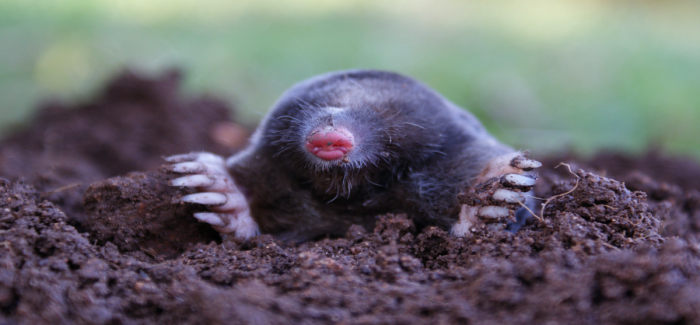Biology – Mole
Editor | On 24, Feb 2019
Darrell Mann
Despite the havoc they’ve managed to wreak in my vegetable garden this summer, I still maintain a sneaking admiration of moles. Weighing about 100g and having a length of about 12cm, they somehow manage to burrow their way through even the most compacted soil. We had a drought for most of the season, so the ground was particularly tough to work. At one point I had to dig a 40cm cube hole and it took me close to an hour. So how come one mole can, in the space of one day, dig a burrow from my broad-beans to the potatoes 10m away?
Answer, by being able to generate digging forces over 40x its body weight.
If I were trying to evolve an equivalently effective digging solution, here’s how I would map it onto the Contradiction Matrix:

As it turns out, a lot of similarities exist between what the Matrix recommends as solution strategies and what the mole actually does. Several academics, having recognized the extraordinary digging talents of the mole have studied how they do it. The best paper is probably this one – http://www.cs.man.ac.uk/~rob/publications/Scott_mole.pdf – from a pair of researchers at the University of Manchester.
What this paper reveals are the following characteristics:
- The mole digs one claw at a time (Principle 19, Periodic Action); when one claw is ‘digging’ (i.e. pushing earth backwards so the mole can move forwards), the opposite claw is helping to react the loads (Principle 9, Prior-Counter-Action) – a bit like, if you can imagine arm-wrestling, it is far easier to beat your opponent if you hold on to the table with your free hand.
- The claw movement contains a number of interesting joint articulations that allow the forelimb to be extended during digging and retracted during return (Principle 17, Another Dimension):

- The alignment of the elbow is such that the digging forces are transmitted through the elbow joint rather than the muscles (Principle 35, Parameter Change).
- The density of the bones is nonuniform such that the centre of gravity position of each bone is optimised to further affect the digging performance (Principle 3, Local Quality)
The paper culminates in a concept design for a biomimetic robotic digger, which looks like this:

Which, I would say, combines the above mentioned Principles, but also manages to include some intriguing Principle 7, Nesting as well. Call it biology-plus. Especially if it doesn’t destroy my potato crop.

